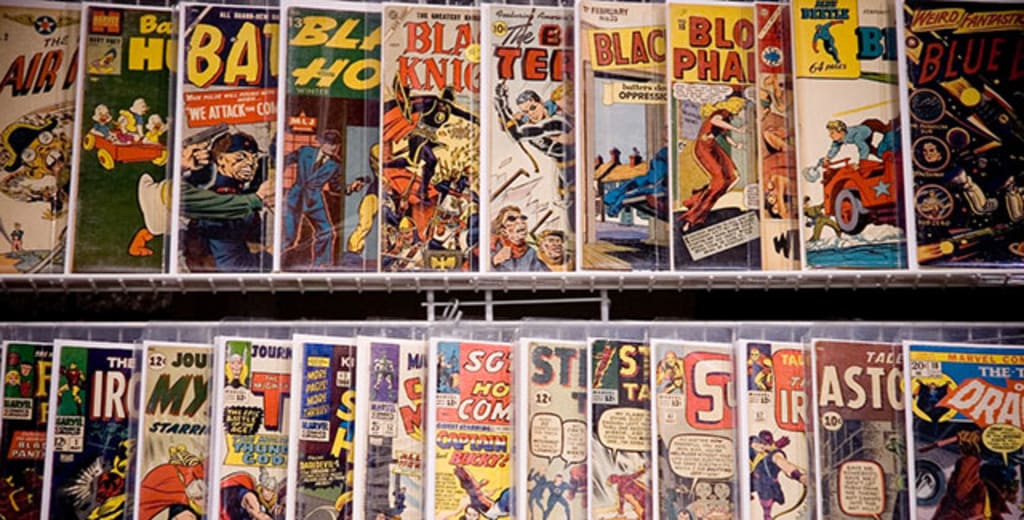When Comics Were Invented?
Comics have become an integral part of modern popular culture and entertainment.

Comics have become an integral part of modern popular culture and entertainment. From the colorful superhero adventures of Marvel and DC to the thought-provoking graphic novels of Art Spiegelman and Marjane Satrapi, comics have captured the imagination of people all over the world. But when were comics invented, and how did they become the cultural phenomenon that they are today?
The origins of comics can be traced back to the late 19th century, when newspapers and magazines began publishing serialized cartoons and humorous illustrations. These early comics were often single-panel cartoons or strips that featured simple storylines and visual gags. The first comic strip to achieve widespread popularity was "The Yellow Kid," created by Richard F. Outcault and published in the New York World newspaper in 1895. The strip featured a mischievous young boy with a distinctive yellow outfit and became so popular that it spawned a host of imitators.
The early 20th century saw the rise of the comic book, a format that would become synonymous with the medium of comics. The first comic book, "Famous Funnies," was published in 1933 by Eastern Color Printing. The book featured reprints of popular newspaper comic strips and proved to be a hit with readers, selling over 200,000 copies. The success of "Famous Funnies" led to the creation of other comic books, including "Detective Comics," which introduced the world to Batman in 1939.
The Golden Age of Comics, which lasted from the late 1930s to the mid-1950s, saw the rise of the superhero genre and the creation of some of the most iconic characters in comics history. Superman, created by Jerry Siegel and Joe Shuster, made his debut in "Action Comics" in 1938 and quickly became a cultural phenomenon. Batman, created by Bob Kane and Bill Finger, followed a year later and proved to be just as popular. Other superheroes soon followed, including Wonder Woman, Captain America, and the Flash.
The Golden Age of Comics was also marked by the introduction of the Comics Code Authority, a self-regulatory organization created in response to concerns about the content of comic books. The code imposed strict guidelines on the depiction of violence, sex, and other controversial subjects, and many comic book publishers were forced to alter their content to comply with the code.
The Silver Age of Comics, which began in the mid-1950s and lasted until the early 1970s, saw a resurgence of superhero comics and the introduction of new characters and storylines. The Silver Age is often associated with the work of Marvel Comics, which introduced characters like Spider-Man, the X-Men, and the Fantastic Four. These characters were different from traditional superheroes in that they were flawed and relatable, with real-world problems and personal issues that readers could identify with.
The Bronze Age of Comics, which began in the early 1970s and lasted until the mid-1980s, saw a shift in the tone and content of comics. This era was marked by the introduction of darker and more mature storylines, as well as the rise of independent comics publishers and alternative comics. The Bronze Age saw the introduction of characters like Wolverine, the Punisher, and Swamp Thing, as well as the publication of groundbreaking works like "Watchmen" and "The Dark Knight Returns."
The Modern Age of Comics, which began in the mid-1980s and continues to the present day, has seen the medium of comics evolve and diversify in ways that were once unimaginable. The rise of the graphic novel has led to a greater emphasis on long-form storytelling and literary themes, while the proliferation of digital comics has made the medium more accessible to readers all over the world. The Modern Age has also seen the introduction of more diverse and inclusive characters and storylines, reflecting the changing attitudes and values of contemporary society.
In conclusion, comics have a long and rich history that dates back over a century. From the early newspaper cartoons of the late 19th century to the superhero epics of the Golden and Silver Ages, comics have always reflected the cultural and social trends of their time. Today, comics continue to evolve and adapt to the changing needs and desires of readers, and their influence on popular culture shows no signs of slowing down.
About the Creator
Talea Weeanor
I am a proud native of Columbia, driven by my passion for culture. My insatiable appetite for knowledge and understanding of diverse perspectives has led me to be thoroughly immersed in the world of the arts.






Comments
There are no comments for this story
Be the first to respond and start the conversation.